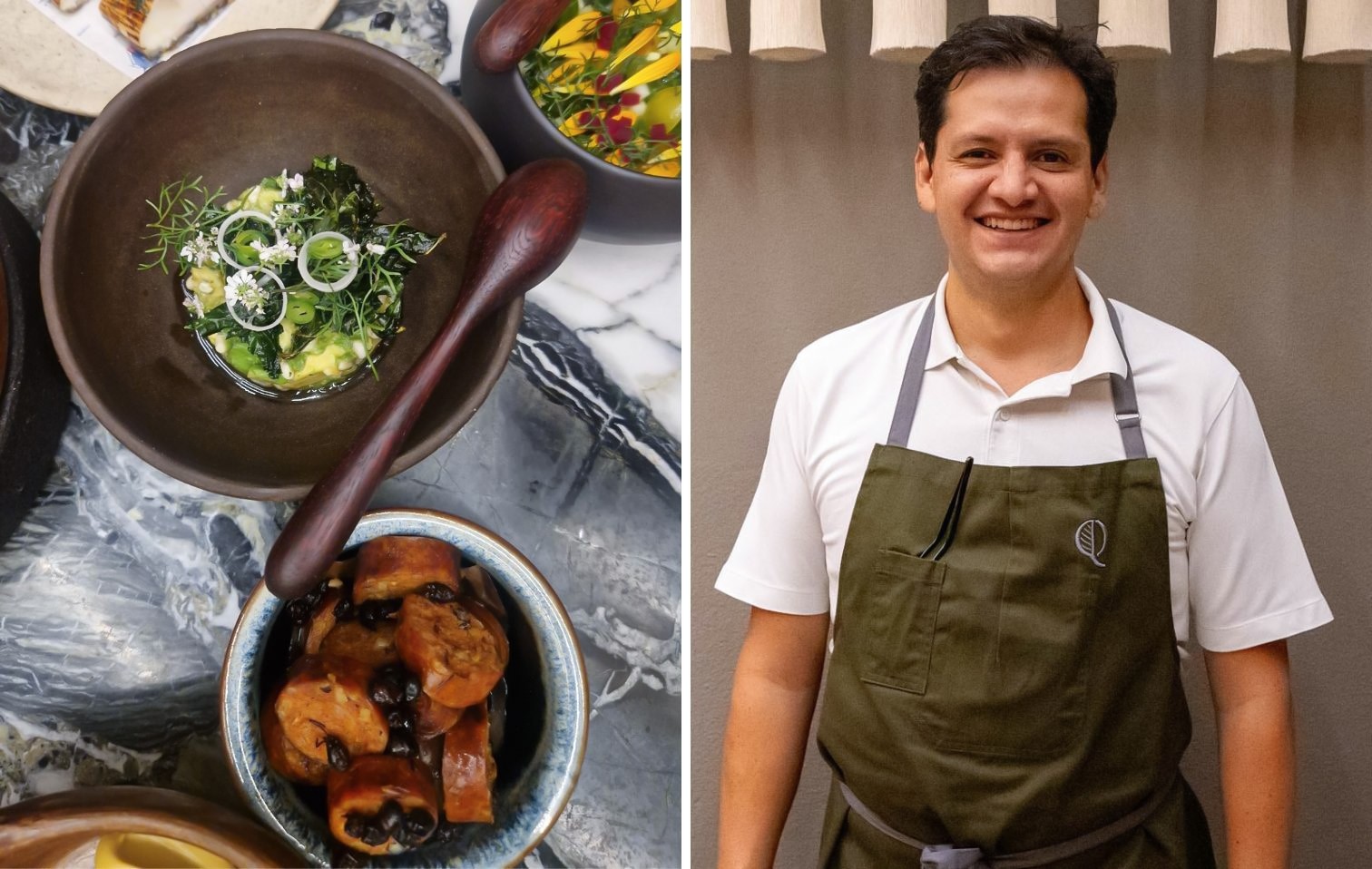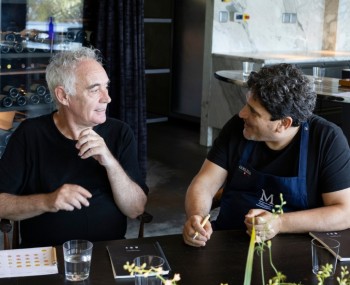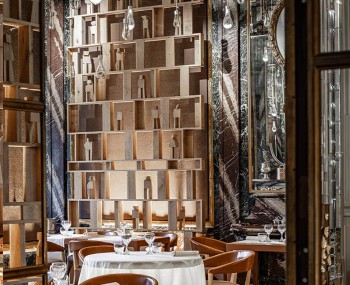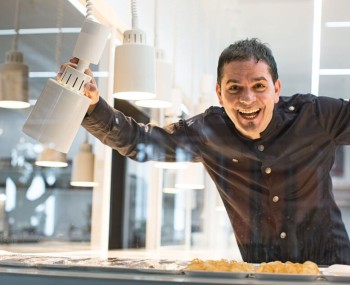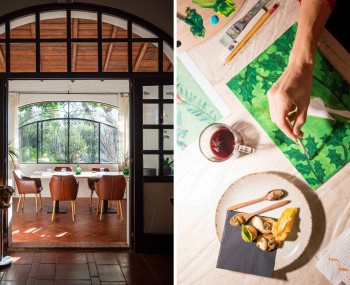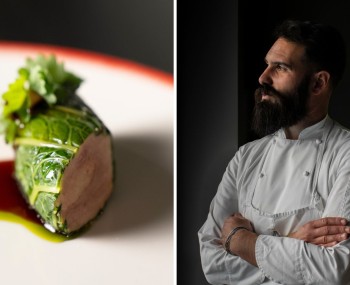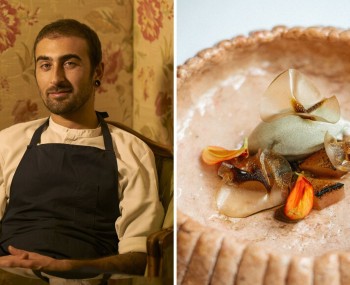Jorge Vallejo's dishes are extremely refined and visually stunning: a prime example of how far Mexican cuisine can go, which inherently has great character but here presents itself in an unexpected form.
Photo credits: Malgorzata Minta
The restaurant
There's perhaps no other country in the world with a gastronomy so rich as Mexico – and so banalized and bastardized on a global scale. Go to the most popular Mexican restaurants in, let’s say Central Europe (Italy is not immune to the curse either), and you will find dining rooms full of perfectly content eaters, gulping down nasty fatty quesadillas and soggy nachos with plastic shredded cheese and out of season defrosted green pepper and tomato bits. But hey, there’s a photo of a mariachi singer up there and a Youtube playlist curated by a random employee who punched in “Mexican music” in the search engine, so it must be authentic.

This gimmicky portrayal could not be further away from what real Mexican cuisine is. A rollercoaster of flavors and spices and herbs and fruits and bugs and cacti and thick rich moles and juicy meats cooked underground for 12 hours with sour oranges and fragrant rubs. A plethora of ways to use corn and beans, a whole world of chilies, ranging from subtle heat to get-the-fire-extinguisher-hot, liquid melipona (stingless bees) honey, mescal and fermented pineapple concoctions, outstanding seafood from the North and rich Mayan techniques from the south.
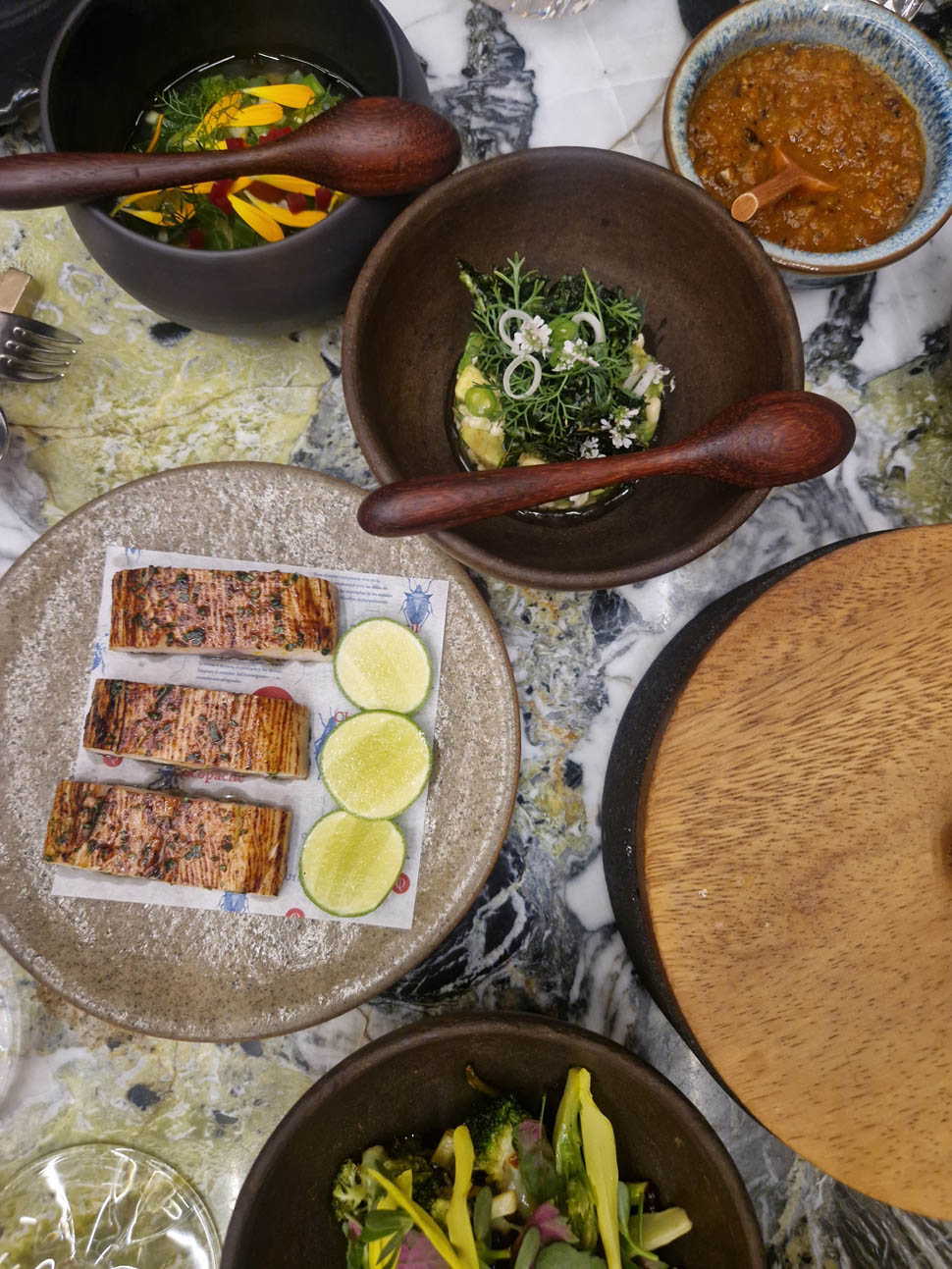
At Quintonil which is about to celebrate its 12th anniversary, Jorge Vallejo and his wife and partner Alejandra Flores make use of all that creating a consistently strong menu that showcases both the richness of Mexican ingredients and the modern reinterpretations of traditional dishes and use of very specific ingredients be it different kinds of mole, nopal (prickly pear) cactus or escamoles (ant larvae).
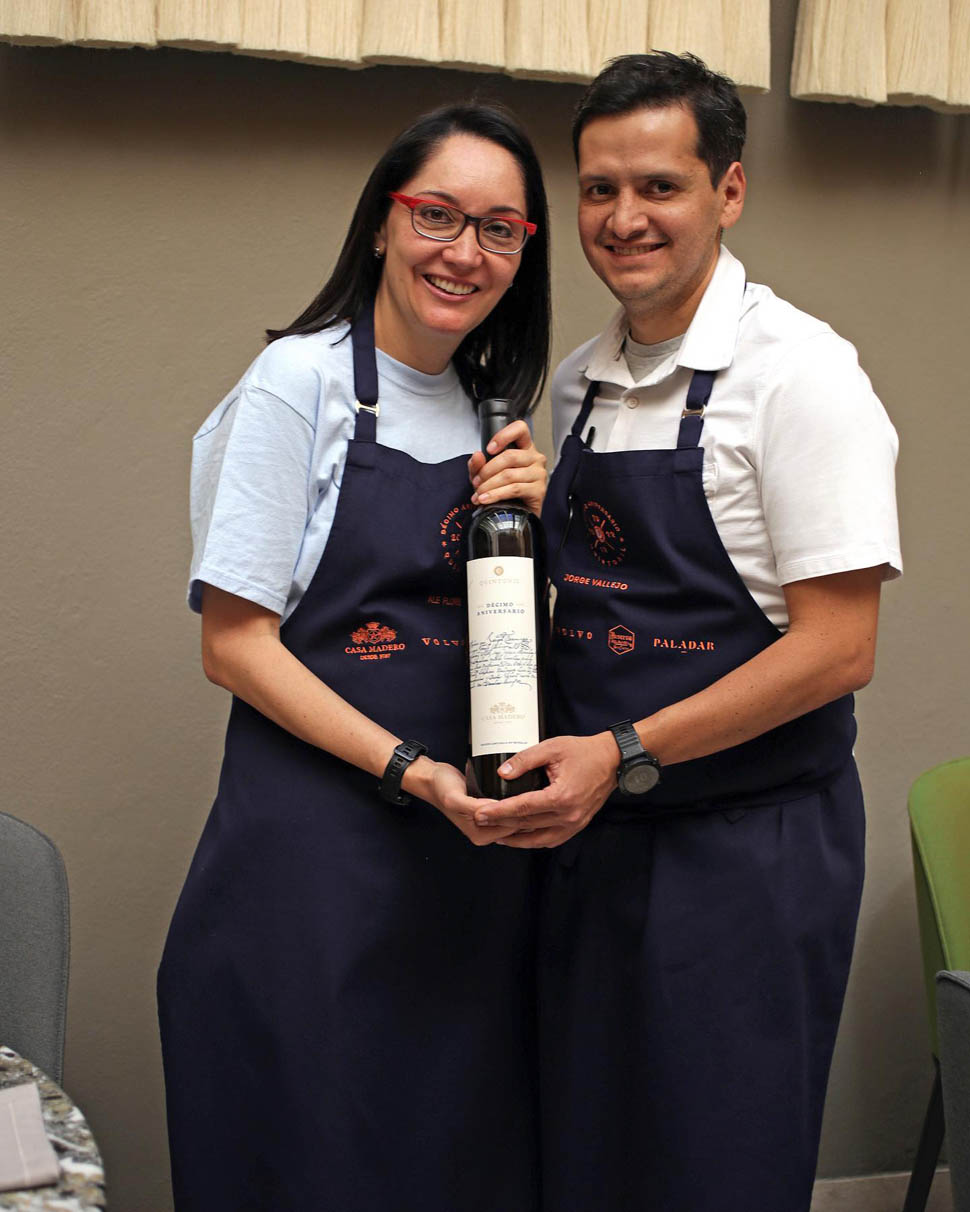
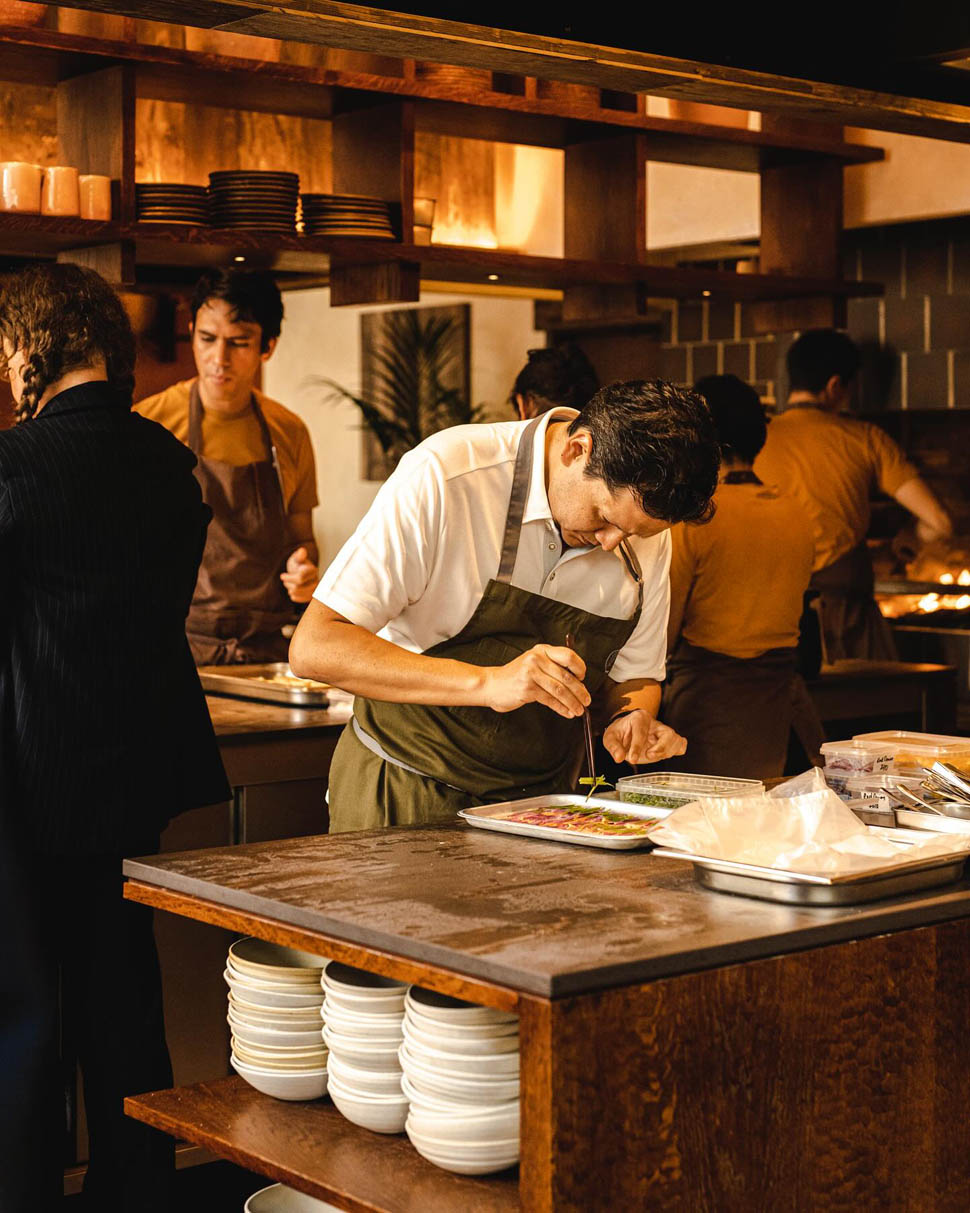
The dishes
It’s an unpretentious restaurant, set in the affluent Polanco district of the Mexican capital, overlooking the open kitchen action and decorated with Mexican artwork, a bright place with high ceiling that has a feel of Vallejo and Flores welcoming you in their house. And the meal starts on a similar note.
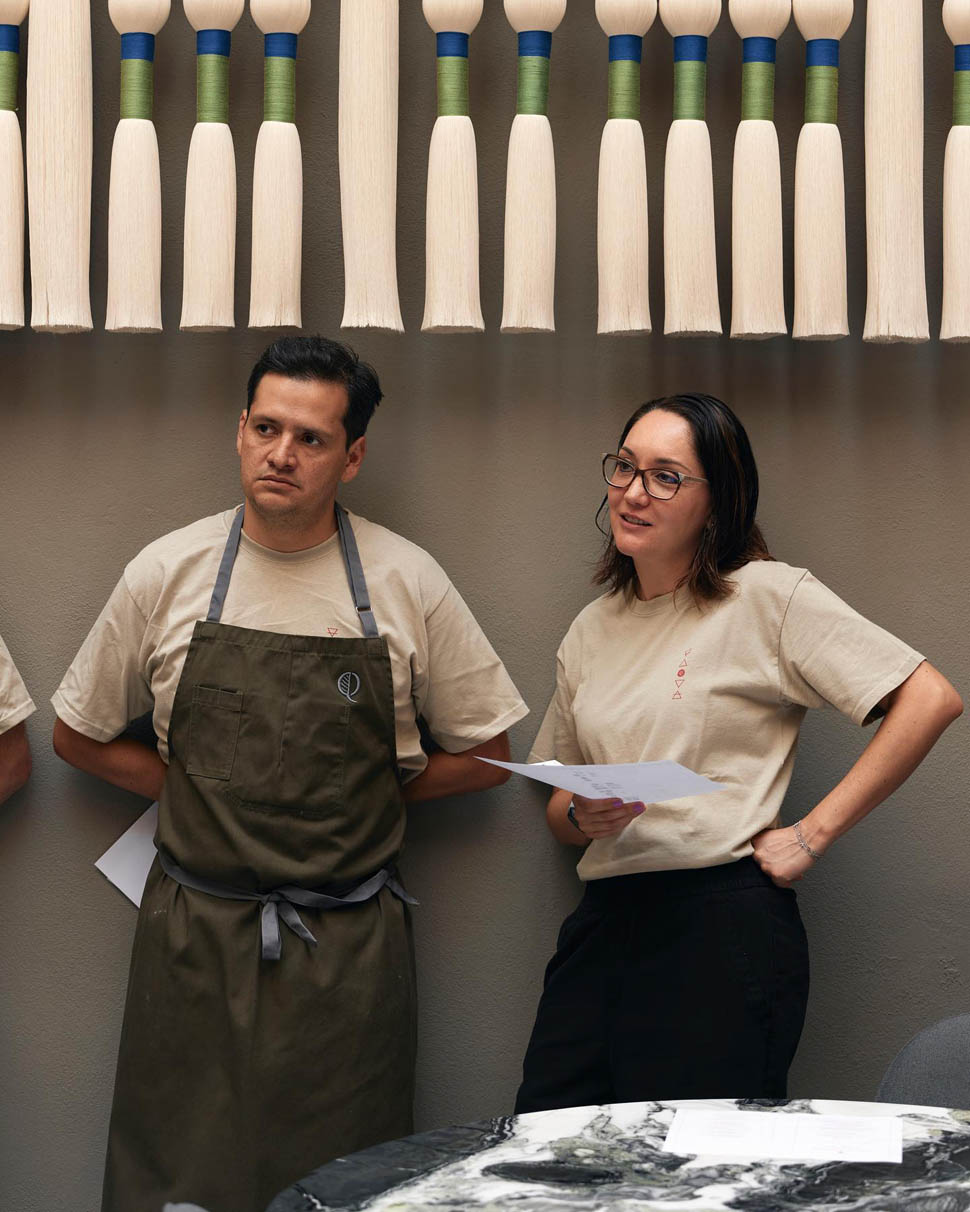
First with “Agua de Quintonil”, a signature cocktail made with mescal espadin, quintonil (a type of fresh green herb used both in dishes and cocktails), mandarine and lemon. Then there’s the warm, outstanding opening act in shape of green chileatole (thick corn masa soup with chilies and epazote) made with Mexican herbs and cuaresmeno pepper to give it that extra kick, followed by the silky, creamy butternut squash and tomato salad with rice horchata (traditional beverage, usually made of rice and spices) and pumpkin seeds.
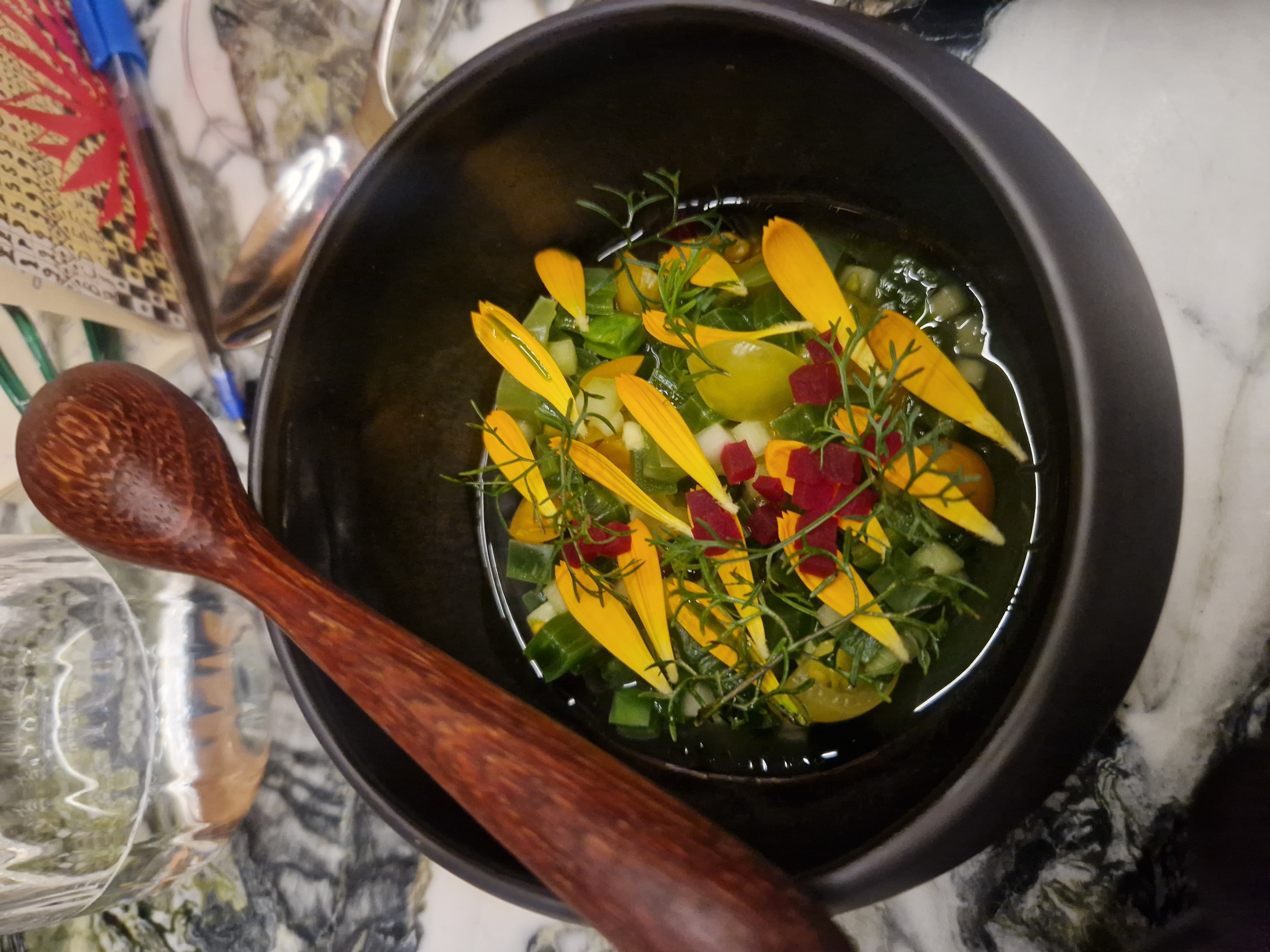
We then move onto the longtime crowd favorite at Quintonil, king crab in pipian verde sauce with sunflower seeds, makrut lime and Thai basil topped with a layer of blue corn tostadas for that extra texture. It’s a beautiful, elegant dish with a subtle nod to Thailand and the unforgettable green curry Vallejo had on one of his trips. He compares the curry to mole in a way they are both made similarly, by mixing fresh and dry ingredients, spices and chilies, and the spirits of the two nations revealing themselves in these two staple sauces.
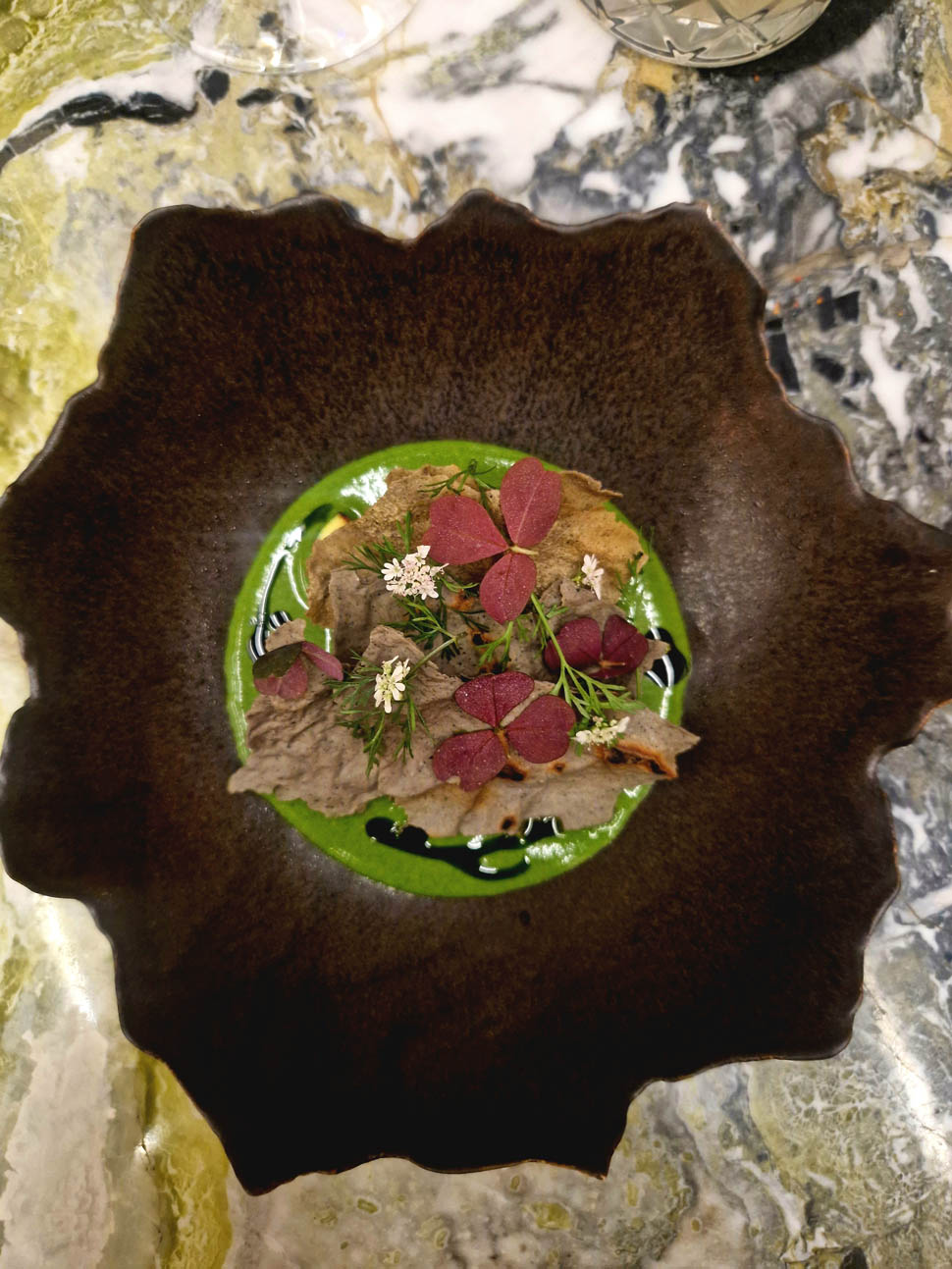
There’s less stories to be told with the warm lobster tartare with tomatoes and pickled radishes, rounded with light bean sauce, hoja santa and vinegared butter. It’s a safe, comforting dish that could be served really anywhere, in a beachside restaurant in Rimini or an art deco sundeck in Miami, but we immediately return back to quintessential Mexico with a tamal with pibil duck (duck cooked underground) served on a banana leaf with young corn cream.
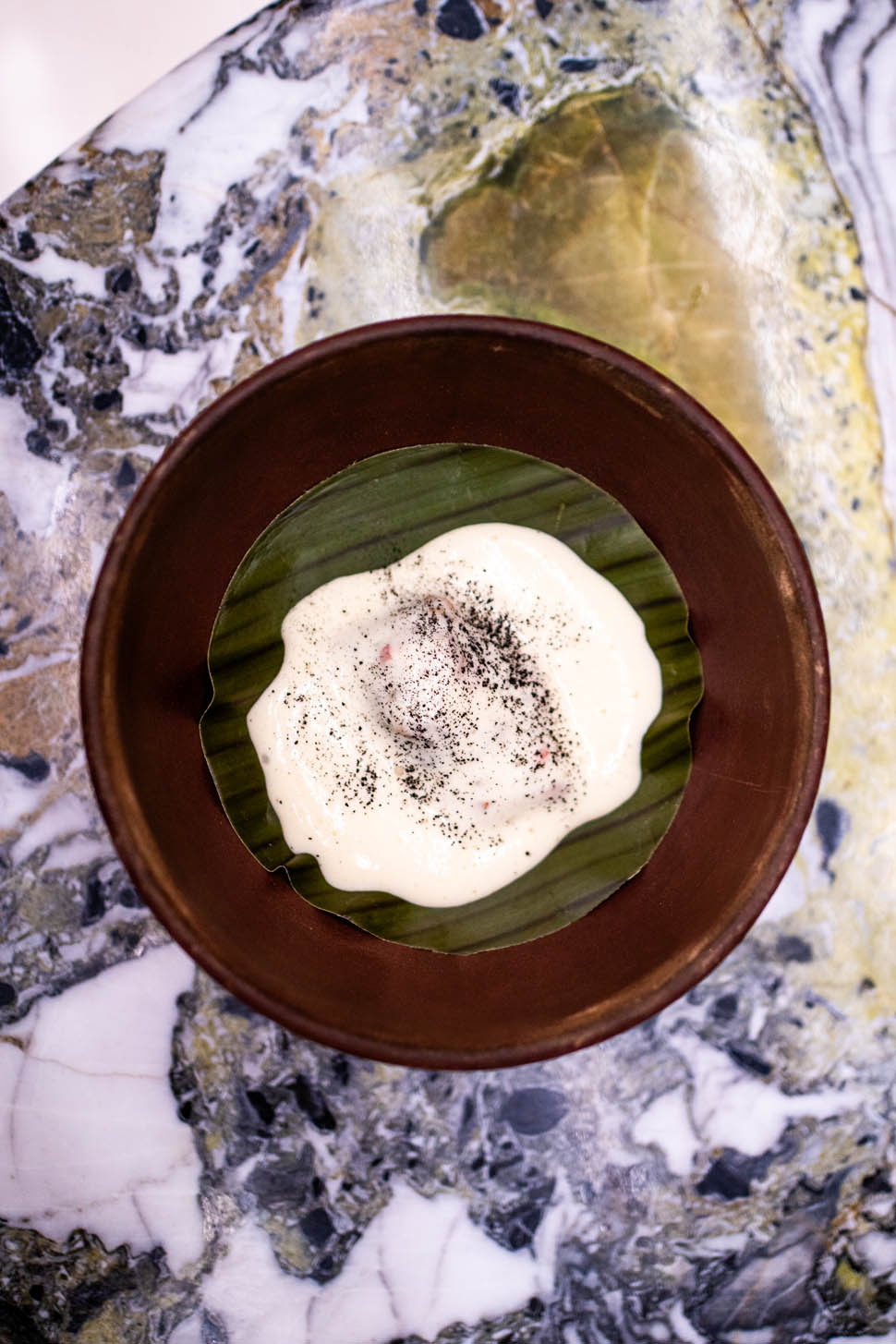
There’s so many versions of tamales in Mexico ranging from savory to sweet, depending on the topping, and it’s impossible to avoid them when you visit the markets where they are served still warm, with a cup of flavored horchata, for a pocket change, really. It’s one of those hearty, starchy, spongy dishes that can be hard to recreate in a fine dining setting, but Vallejo pulls it off. The highlight of the latest menu though is a centerpiece taco feast with all the sophisticated and well thought through sides presented under collective name “Entomophagy festival” – yes, it’s Quintonil’s celebration of insects and the many ways they are consumed in Mexico.
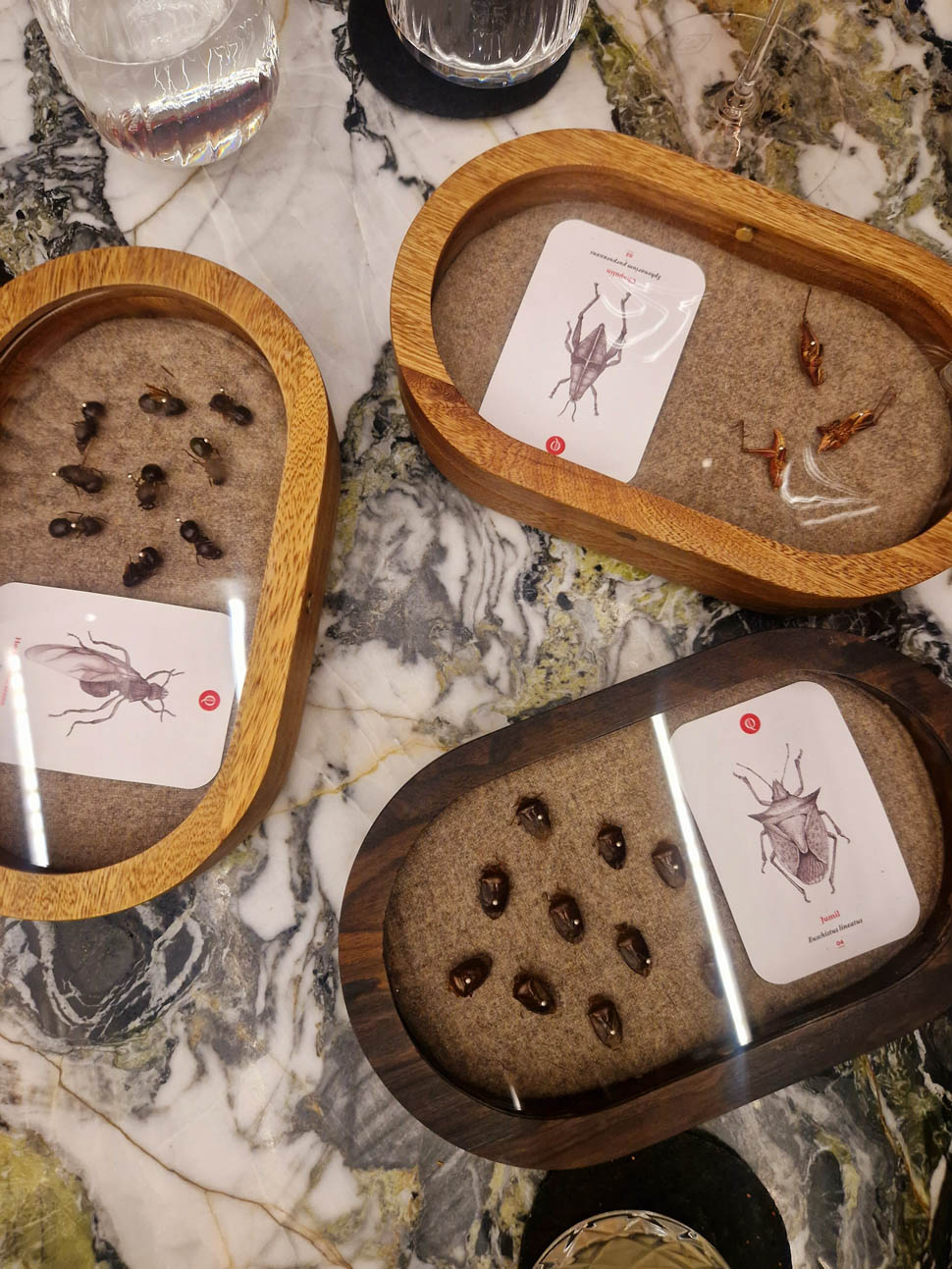
If you have an aversion to eating bugs perhaps the very academic display of pinned grasshoppers, big ass ants and stink bugs under the glass casing isn’t exactly appetite inducing, but the course, as served, is undoubtedly one of the prettiest out there and makes you forget all the different critters you are swallowing. There are two main proteins – perfectly seared striped bass à la barbacoa in adobo de chapulin (grasshoppers), and an outstanding chicatana ant (flying ant) chorizo.
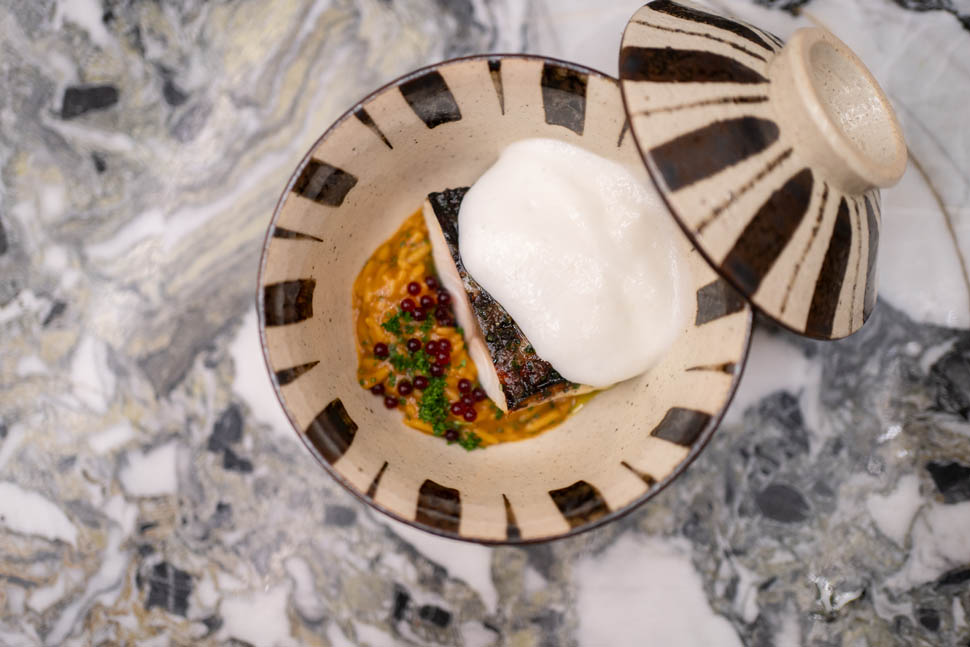
Then there’s a whole range of glorious sides and toppings, really up to you to mix and match. Go wild, is usually the only instruction they give you, depending only on your personal preference and tolerance for spicy salsas. That said, I am absolutely sure I am still being heavily judged when my taco as per rule starts crumbling and falling apart under the weight of one topping too many. But I digress. For the Quintonil Entomophagy festival the least adventurous (but lovely) side is the cauliflower cream. Then there’s the vegetable ceviche in smoked cactus leche de tigre that has a very gooey texture to it, and some confit onions and santanero beans from Oaxaca.
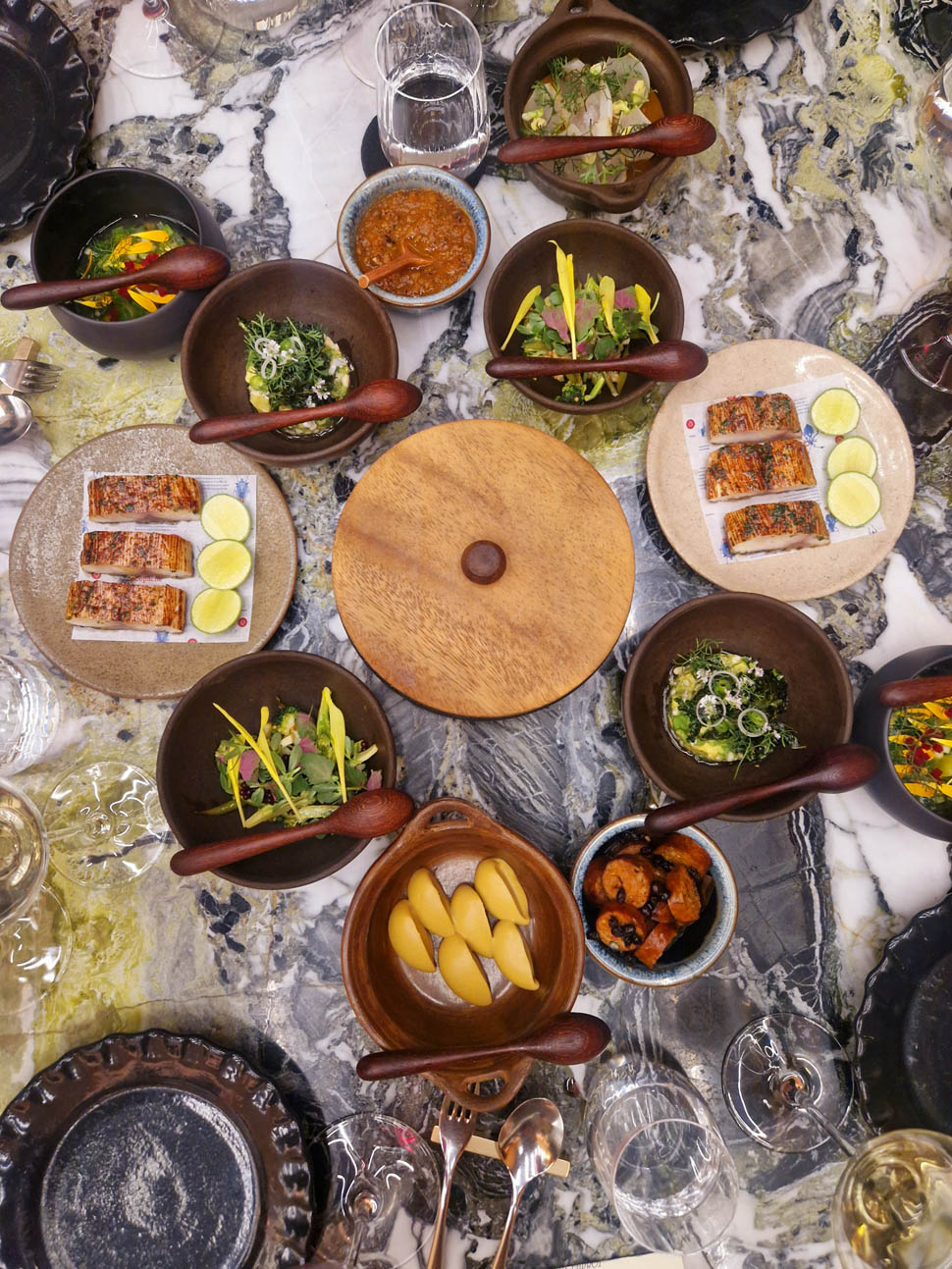
What used to be a separate Quintonil dish is now part of this bug feast, the very tasty charred avocado tartare with escamoles (ant larvae) and vegetable chips, whereas the salsa roja in this version is made with jumiles (stink bugs) and epazote leaves (aka Jesuit’s tea aka Mexican tea). It’s all served with wooden boxes of freshly made, still warm criollo corn tortillas from Santa Maria del Llano that you are free to turn into your own personal taco (with a table full of food journalists there’s some palpable competition going on).
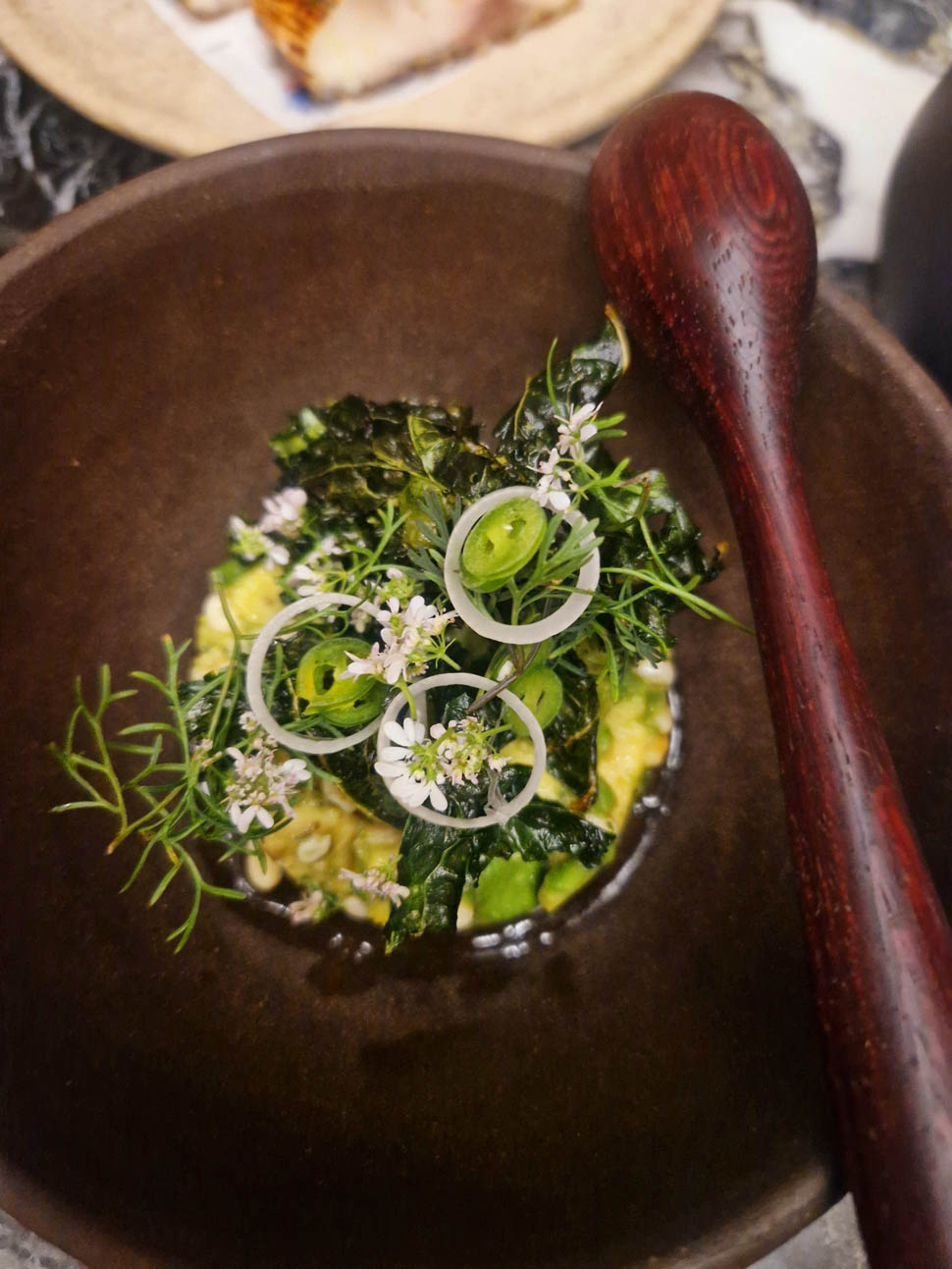
It’s such an exciting and clever course – not only because it’s visually stunning, but because it combines so many different elements and flavors and textures, gives an insight into the insect consuming diet as an organic part of the tradition and nutrition, but at the same time bringing it into a new era of Mexican (fine) dining. It’s a tough act to follow. But after a trip to San Pedro Atocpan that same day there’s no way we could have a Quintonil menu that doesn’t showcase the whole glory that is mole. Now. Mole sounds like such a basic, essential ingredient of Mexican cuisine but it’s one of the most complex sauces in the world made with up to 30 ingredients.
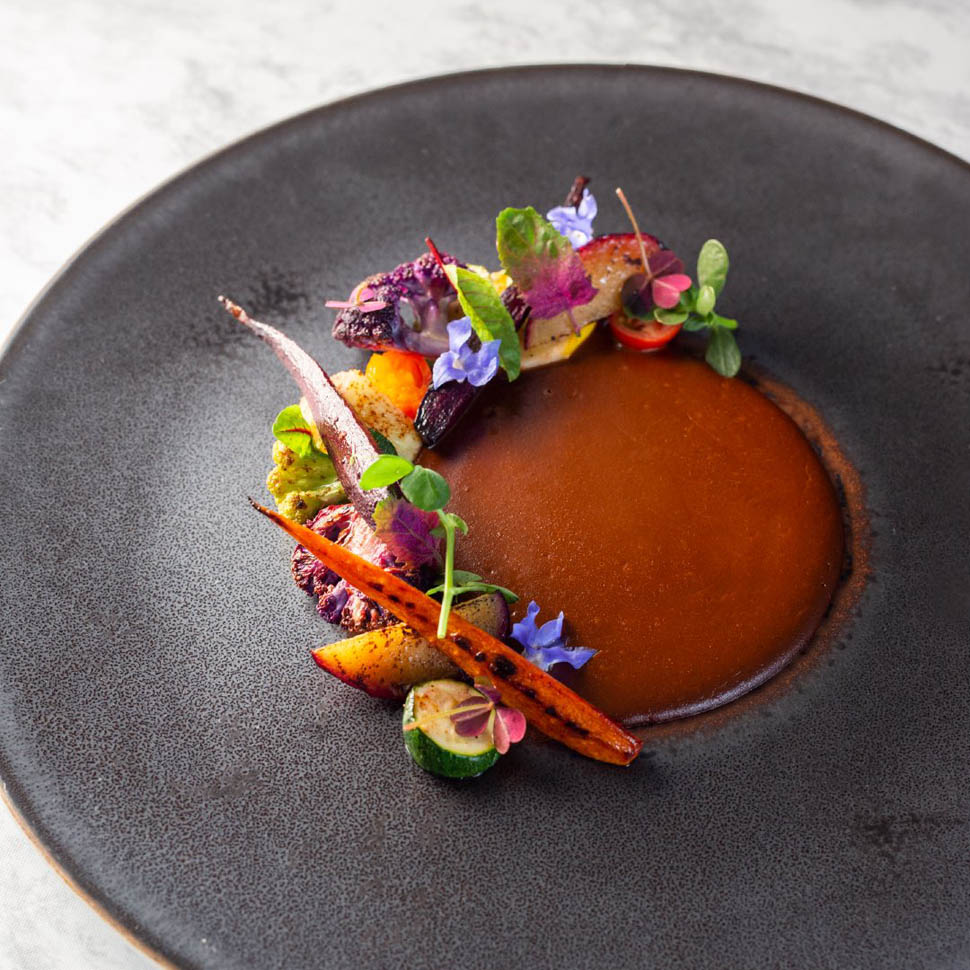
There’s a plethora of different kind of moles, from black (mole negro) to red (mole rojo), from mole ranchero to mole pipian and everything in between. Every family has its own mole recipe and there’s no place with a competition as steep as in San Pedro Atocpan, a small community in Milpa Alta, the southeastern rural borough of Mexico City. A whopping 92 percent of the community is employed in the mole industry and the town now produces 60% of the mole made in Mexico and 89% of the mole consumed in Mexico City, adding up to between 28,000 and 30,000 tons of mole produced each year. One of the most respected producers is family run Mole Don Luis where Vallejo gets his moles from as well. At Don Luis they are firm believers of frying all the mole ingredients, everything from cinnamon to bay leaf, from chocolate to cookies. Then they mix it, then they grind it, so the sweet fragrant dust covers us all.
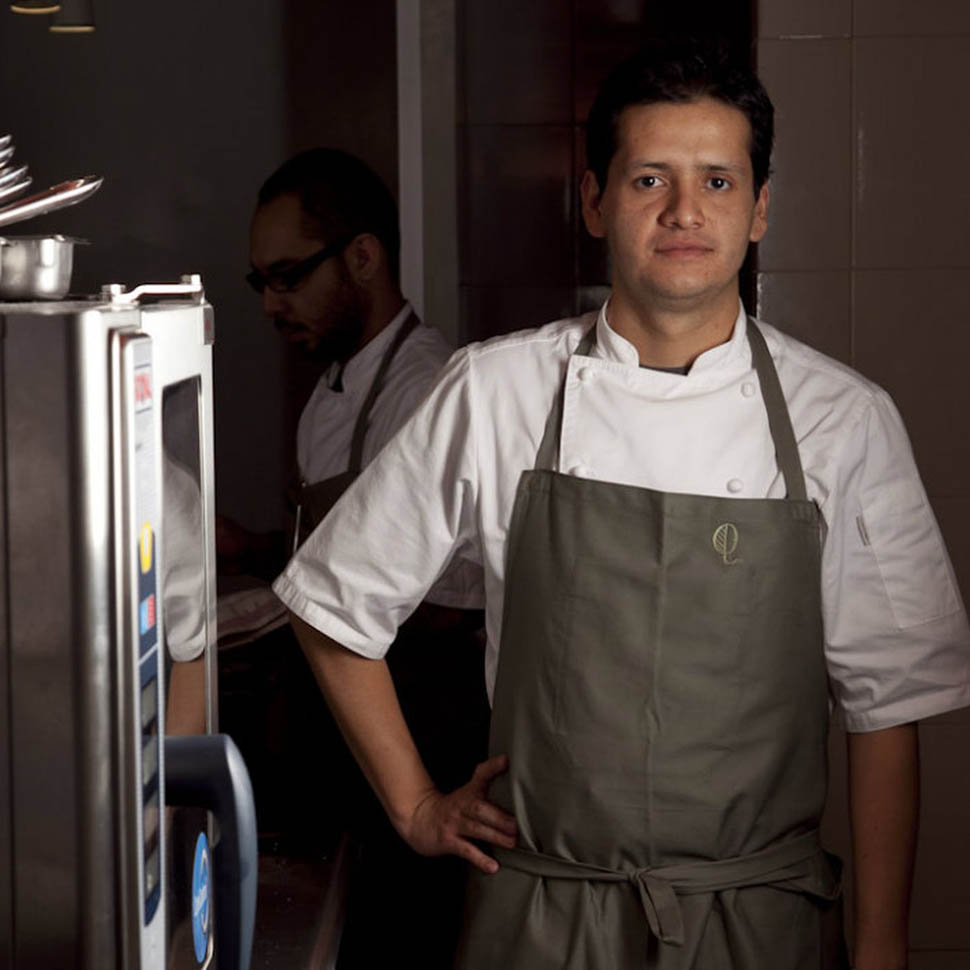
On the January Quintonil menu it was chichile negro mole, one of those rich, deep, spicy chile moles made of different kinds of chilies, allspice, tomatillos and garlic that accompanied the juicy slices of crispy roasted aged duck and charred eggplant. Before you move on to the desserts you clean the palate with the extraordinary, very creamy cactus paddle sorbet followed by Crème fraîche with melipona (stingless) bee honey, physalis and caviar. Mexican cornbread is next, served with rompope de nixtamal, Cuetzalan vanilla and passion fruit (and s few shavings of truffle - just because).
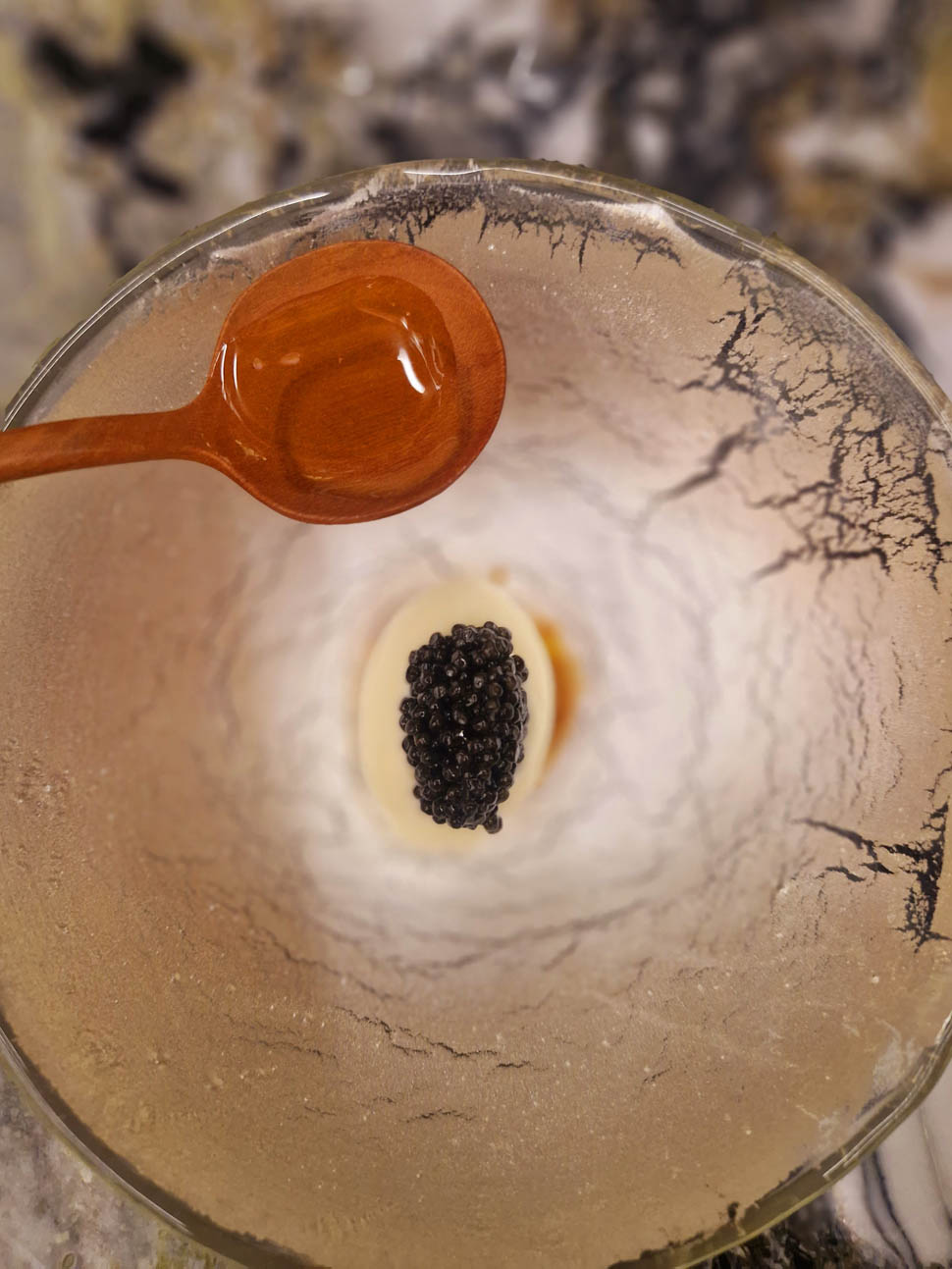
And for the final blow - Mamey fruit (popular Mexican fruit, kind of a mix between papaya and avocado with an amaretto flavored pit) panna cotta tartelette with pixtle (Mamey seed) cream and lemon and ultra fluffy Tacho chocolate parfait with raspberry, olive and black garlic. Jorge Vallejo’s dishes are always very refined, a masterclass of elevating Mexican cuisine that in itself is quite robust into a fine dining version of it – which is not always easy in countries where street food and casual traditional food is so outstanding you really don’t want to mess with it.

But Mexico has proved time and time again it is very much capable of satisfying every kind of eater – the one searching for the dirtiest tortas and molotes and midnight taco al pastor as well as the one looking for a more elevated execution of what Mexican cuisine is supposed to be or can be – and everything in between.
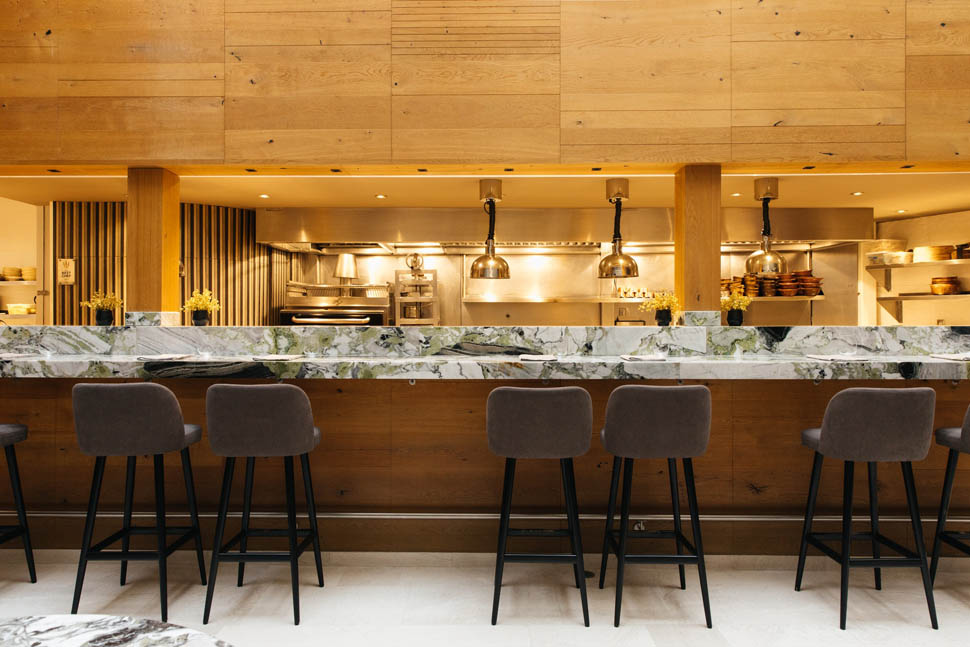
Contacts
Quintonil
Av. Isaac Newton 55, Polanco, Polanco IV Secc, Miguel Hidalgo, 11560 Ciudad de México, CDMX, Messico
Phone: +52 55 5280 2680
